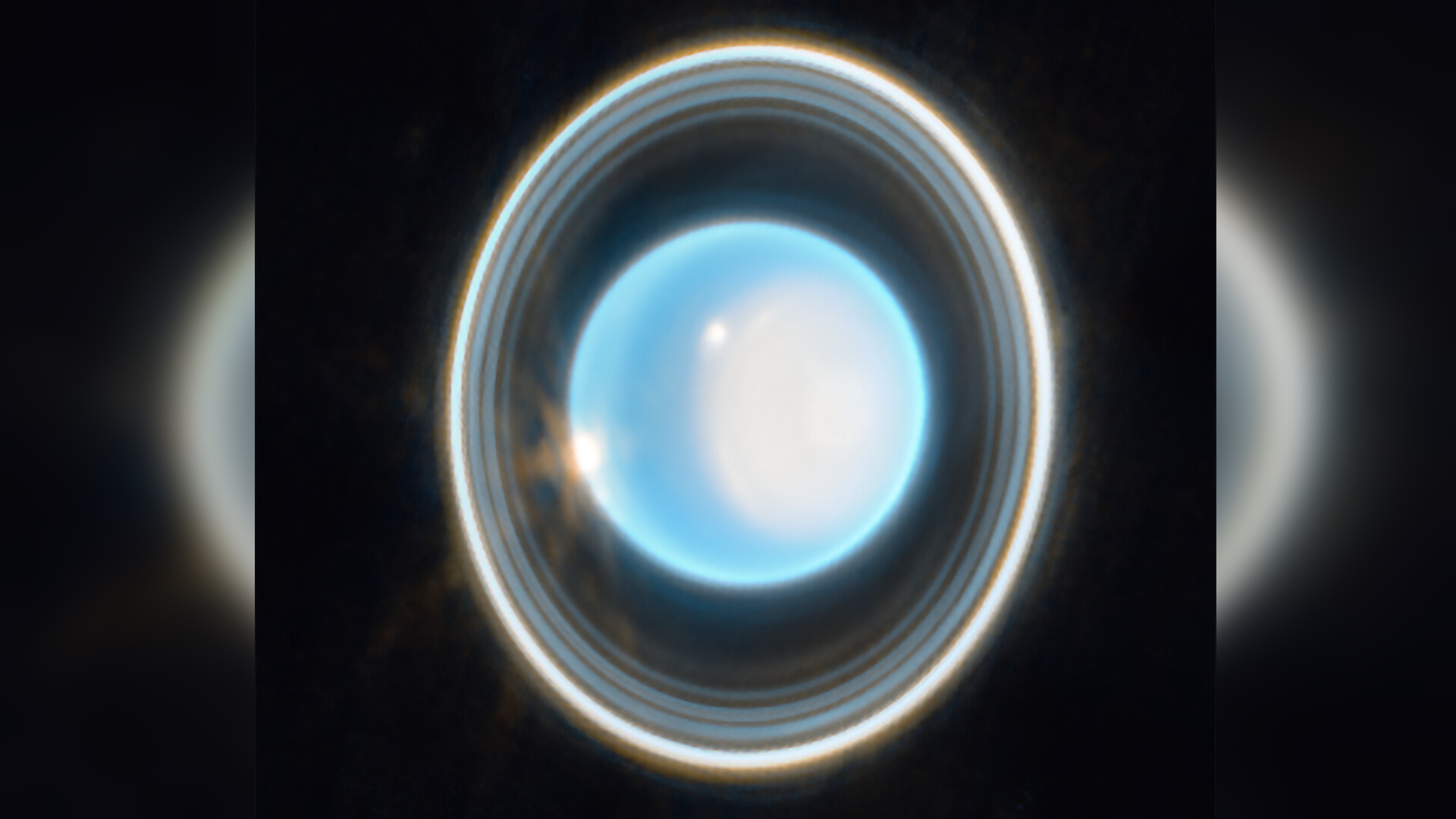
The James Webb Space Telescope has captured a stunning new image of the planet Uranus, depicting its remarkable rings and general features of our solar system’s distant planet.
The James Webb image of the planet Uranus was developed by NASA, the European Space Agency (ESA) and the Canadian Space Agency (CSA) and captures all the magic of the ice giant of our solar system.
Uranus has 13 known rings, 11 of which are visible in these images. Among them are two weaker rings of dust that were only imaged twice, by the Voyager 2 spacecraft that flew by the planet in 1986 and the Keck Observatory in Hawaii with advanced adaptive optics.
Uranus, the seventh planet from the Sun, is unique: it rotates sideways at an angle of about 90 degrees from the plane of its orbit. This causes extreme seasons, with its poles experiencing many years of continuous sunlight, followed by an equal number of years of complete darkness.
Currently, it is late spring at the North Pole, which can be seen, while summer at the North Pole will be in 2028. By contrast, when Voyager 2 visited Uranus, it was summer at the South Pole, and it is now on the dark side of the planet.
1. Voyager 2: @employee 2 flew by Uranus in 1986, photographing the planet as a mostly featureless pale blue-green ball. It also gave us a closer look at the rings of Uranus. pic.twitter.com/EtaRvEWNVI
– NASA Webb Telescope (NASAWebb) April 6, 2023
In James Webb’s images, we see the planet in greater detail, showing how dynamic Uranus’ atmosphere is.
3. Keck & Observatory @employee: @employee The infrared composite image at left was taken in 2004 using adaptive optics. On the right is the same image with the addition of Chandra’s X-ray data, shown in purple. pic.twitter.com/1bsAO8QIpy
– NASA Webb Telescope (NASAWebb) April 6, 2023
On the right side of the planet is a region of brightness at the pole facing the sun known as the “polar cap” – it seems to appear when the pole enters direct sunlight in the summer and disappears in the fall.
The data recorded by the space telescope will help scientists understand the currently mysterious mechanism behind this feature.
Uranus has 27 known moons. Most are too small and dim to see, but the six brightest are rated for this broad view. (The other bright objects are background galaxies.) This was a 12 minute exposure photo only! It’s just the tip of the (planetary) iceberg of what Webb will reveal. pic.twitter.com/p7vpPdNiqo
– NASA Webb Telescope (NASAWebb) April 6, 2023
James Webb has also photographed many of the 27 known moons of Uranus.

“Total alcohol fanatic. Coffee junkie. Amateur twitter evangelist. Wannabe zombie enthusiast.”





More Stories
Is this what the PS5 Pro will look like? (Image)
Finally, Windows 11 24H2 update significantly boosts AMD Ryzen – Windows 11 performance
Heart Surgeon Reveals The 4 Things He ‘Totally Avoids’ In His Life